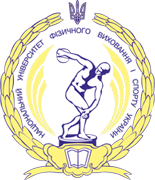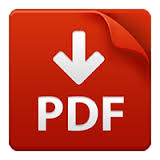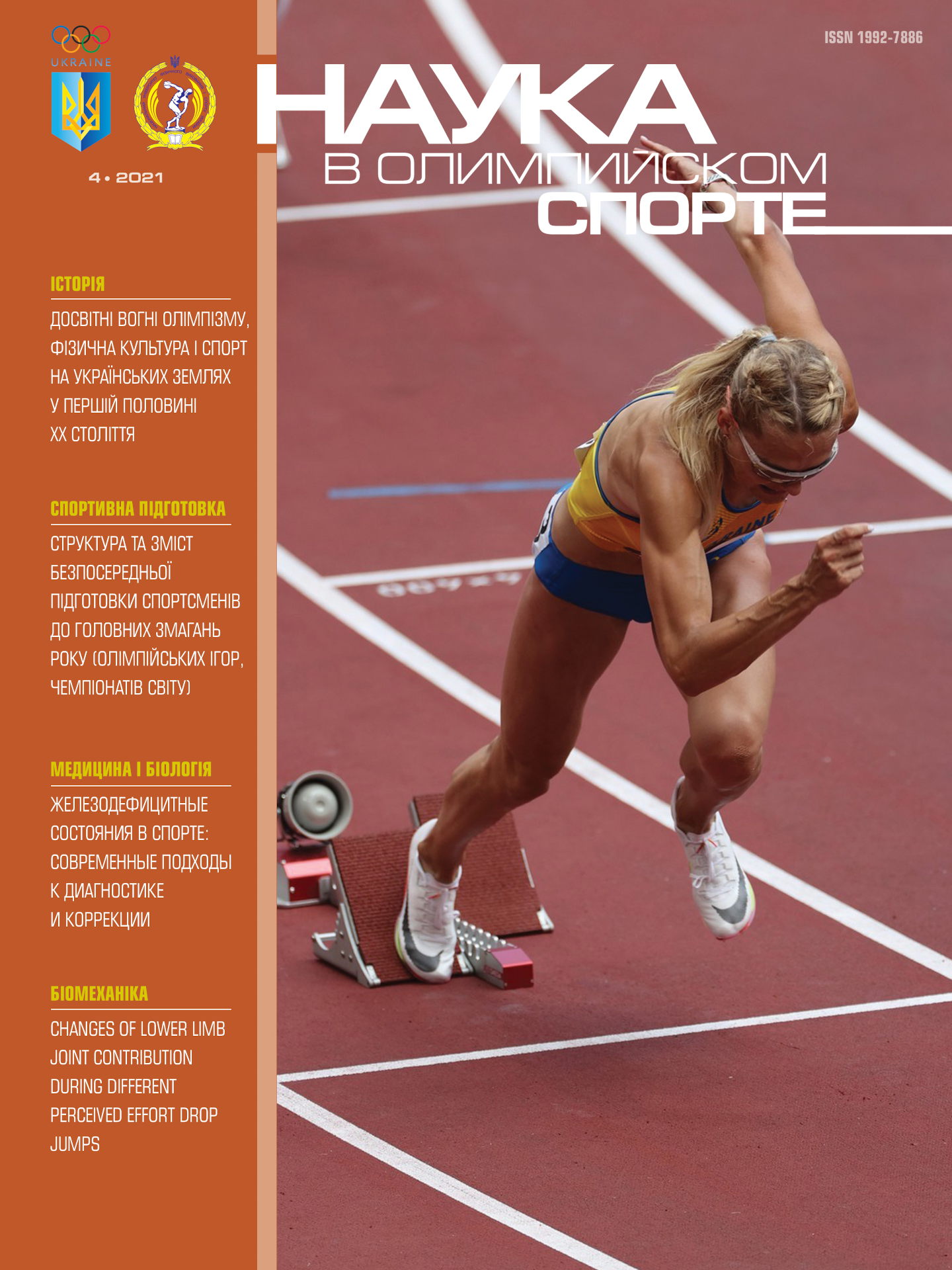doi: 10.32652/olympic2020.3_3
Objective. The formation of an algorithm for estimating hematologic homeostasis indices based on the analysis of data of modern literature and generalization of own results of cohort studies of elite athletes to control and manage the training process.
Methods. Analysis and synthesis of data from scientific and methodological literature; laboratory and diagnostic, statistical.
Results. Based on the analysis of literature data and the results of practical work of the authors, a complex of those parameters of erythrocyte hematological homeostasis, which can be used in the practice of sports training for mediated through changes in blood oxygen-transport function, assessment of aerobic endurance in representatives of different sports events, informative control, and further training process management has been formed.
Conclusion. The described complex of erythrocyte hematological homeostasis indices highlights almost all aspects of erythrocyte formation and their participation in the process of oxygen transfer, reflecting changes in aerobic work capacity, and can be used to assess the quality of life and current functional status of athletes.
References:
1. Antonyan WG, Benyumovich MS, Bolotina AY. Large Russian-English medical dictionary. Moscow, Russia, 2000.704 s.
2. Banfi G. Reticulocytes in sports medicine. Sports Med. 2008;38(3):187.211. doi: 10.2165/00007256-200838030-00002.
3. Bermudez D, Azad P, Figueroa-Mujica R, Vizcardo-Galindo G, Corante N, et al. Increased hypoxic proliferative response and gene expression in erythroid progenitor cells of Andean highlanders with chronic mountain sickness. Am J Physiol Regul Integr Comp Physiol. 2020;318(1): R49.R56. doi: 10.1152/ajpregu.00250.2019.
4. Coles MG, Luetkemeier MJ. Sodium-facilitated hypervolemia, endurance performance, and thermoregulation. Int J Sports Med. 2005;26(3): 182.7.
5. Coller BS. Blood at 70: Its Roots in the History of Hematology and Its Birth. Blood. 2015;126(24): 2548.2560. doi: 10.1182/blood-2015-09-659581.
6. Diaz E, Ruiz F, Hoyos I, et al. Cell damage, antioxidant status, and cortisol levels related to nutrition in ski mountaineering during a two-day race. J Sports Sci Med. 2010;9(2): 338-46.
7. Diaz V, Lombardi G, Ricci C, Jacobs RA, Montalvo Z, et al. Reticulocyte and haemoglobin profiles in elite triathletes over four consecutive seasons. Int J Lab Hematol. 2011;33(6): 638-44. doi: 10.1111/j.1751-553X.2011.01348.x.
8. Dolgov BB, Lugovskaya SA, Morozova VT, Pochtar’ ME. Laboratory hematology. Moscow, Unimed Press, 2002.120 s.
9. Fuller G. Shape of Training: a view from the specialties. Clin Med (Lond). 2014;14(4): 357.360. doi: 10.7861/clinmedicine.14-4-357.
10. Grishchenko ON. New approaches to assessing the blood picture in sport shifts. Sport: medytsyna y zdorove. 2001;(2): 46-51.
11. Gunina LM, Tkachova DL. Modern laboratory criteria in the system of medical and biological control of the athlete: a necessary and sufficient list. Sportyvna medytsyna. 2012;(1): 110-117.
12. Gunina LM. Oxidative stress and adaptation: metabolic aspects of the influence of physical activity. Nauka v olympyiskom sporte. 2013;(4): 19-25.
13. Gusevа SA, Goncharov YaP. Anemia. Kiev, Logos, 2004; pp. 370-71.
14. Li N, Zhou H, Tang Q. Red Blood Cell Distribution Width: A Novel Predictive Indicator for Cardiovascular and Cerebrovascular Diseases. Dis Markers. 2017;2017: 7089493. doi: 10.1155/2017/7089493.
15. Mairbaurl H. Red blood cells in sports: effects of exercise and training on oxygen supply by red blood cells. Front Physiol. 2013;4: 332. doi: 10.3389/fphys.2013.00332.
16. Makarova GA. The diagnostic potential of the blood picture in athletes. Moscow, Sport, 2020. 172 s.
17. Makarova GA, Kholyavko YuA. Laboratory indicators in the practice of a sports doctor: a reference guide. Moscow, Soviet Sport, 2006.199 p.
18. Martin J. Red blood cell physiology. Biomed Instrum Technol. 1995;29(2): 150.161. PMID: 7773325.
19. Mercer KW, Densmore JJ. Hematologic disorders in the athlete. Clinics in Sports Medicine. 2005;24(3): 599-621. doi: 10.1016/j.csm.2005.03.006.
20. Miranda-Vilela AL, Akimoto AK, Alves PC, Pereira LC, Klautau-Guimaraes MN, Grisolia CK. Dietary carotenoid-rich oil supplementation improves exercise-induced anisocytosis in runners: influences of haptoglobin, MnSOD (Val9Ala), CAT (21A/T) and GPX1 (Pro198Leu) gene polymorphisms in dilutional pseudoanemia (sports anemia). Genet Mol Biol. 2010;33(2): 359.367. doi: 10.1590/S1415-47572010005000022.
21. Montero D, Breenfeldt-Andersen A, Oberholzer L, Haider T, Goetze JP, et al. Erythropoiesis with endurance training: dynamics and mechanisms. Am J Physiol Regul Integr Comp Physiol. 2017;312(6): R894.R902. doi: 10.1152/ajpregu.00012.2017.
22. Montero D, Lundby C. Regulation of Red Blood Cell Volume with Exercise Training. Compr Physiol. 2018;9(1): 149.164. doi: 10.1002/cphy.c180004.
23. Montero D, Rauber S, Goetze JP, Lundby C. Reduction in central venous pressure enhances erythropoietin synthesis: role of volume-regulating hormones. Acta Physiol (Oxf). 2016;218(2): 89.97. doi: 10.1111/apha.12708.
24. Morkeberg JS, Belhage B, Damsgaard R. Changes in blood values in elite cyclist. Int J Sports Med. 2009;30(2): 130-138. doi: 10.1055/s-2008-1038842.
25. Murray JA, Fell WJ. Hemostasis in Exercise and the Athlete. Semin Thromb Hemost. 2018;44(8): 707-9. doi: 10.1055/s-0038-1675169.
26. Pasalic L, Pennings GJ, Connor D, Campbell H, Kritharides L, Chen VM. Flow Cytometry Protocols for Assessment of Platelet Function in Whole Blood. Methods Mol Biol. 2017;1646: 369-89. doi: 10.1007/978-1-4939-7196-1_28.
27. Peake JM, Neubauer O, Walsh NP, Simpson RJ. Recovery of the immune system after exercise. J Appl Physiol (1985). 2017;122(5):1077-87. doi: 10.1152/japplphysiol. 00622.2016.
28. Roklicer R, Lakicevic N, Stajer V, Trivic T, Bianco A, et al. The effects of rapid weight loss on skeletal muscle in judo athletes. J Transl Med. 2020;18(1): 142. doi: 10.1186/ s12967-020-02315-x.
29. Rybina IL, Shirkovets EA. Algorithm for assessing adaptive changes in the body of athletes using data from clinical and laboratory control. Vestnyk sportyvnoi nauky. 2017;(3): 36-40.
30. Sharma AP, Saunders PU, Garvican-Lewis LA, Periard JD, Clark B, et al. Training Quantification and Periodization during Live High Train High at 2100 M in Elite Runners: An Observational Cohort Case Study. J Sports Sci Med. 2018;17(4): 607.616. PMID: 30479529.
31. Song QH, Xu RM, Zhang QH, Shen GQ, Ma M, Zhao XP, Guo YH, Wang Y. Glutamine Supplementation and Immune Function During Heavy Load Training. Int J Clin Pharmacol Ther. 2015;53(5): 372-6. doi: 10.5414/CP202227.
32. Temiz A, Baskurt OK, Pekcetin C, Kandemir F, Gure A. Leukocyte activation, oxidant stress and red blood cell properties after acute, exhausting exercise in rats. Clin Hemorheol Microcirc. 2000;22(4): 253-259. PMID: 11081462.
33. Tomschi F, Bloch W, Grau M. Impact of Type of Sport, Gender and Age on Red Blood Cell Deformability of Elite Athletes. Int J Sports Med. 2018;39(1): 12-20. doi: 10.1055/s-0043-119879.
34. Tytsa NU. Clinical Laboratory Test Guide. Moscow, UNIMED-press, 2003. 960 s.
35. Vernec AR. The Athlete Biological Passport: an integral element of innovative strategies in anti-doping. Br J Sports Med. 2014;48(10): 817.819. doi: 10.1136/bjsports-2014-093560.
36. Ycas JW. Toward a Blood-Borne Biomarker of Chronic Hypoxemia: Red Cell Distribution Width and Respiratory Disease. Adv Clin Chem. 2017;82: 105-7. doi: 10.1016/bs.acc.2017.06.002.
Received: 14.07.2020













